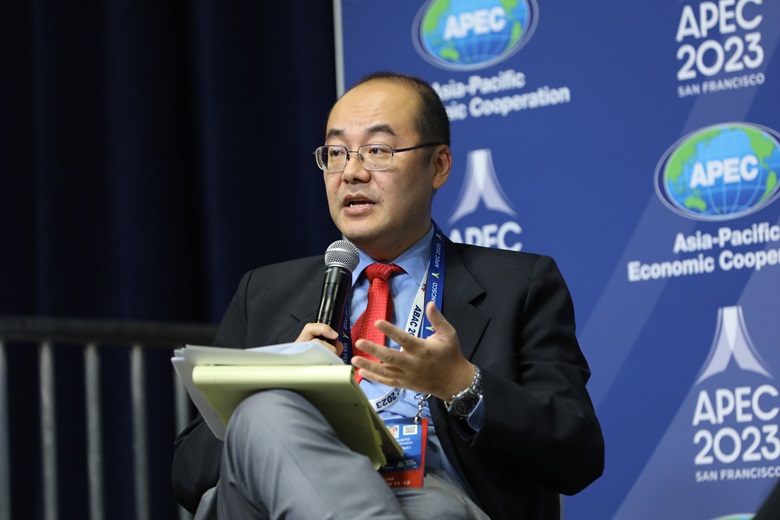
Economic growth in the APEC region is showing signs of improvement, with expected growth of 3.3. percent in 2023, compared to 2.6 percent in 2022, according to the latest APEC Regional Trends Analysis report.
The report, released by the APEC Policy Support Unit explains that a rebound in tourism and domestic consumption is driving economic activity. However, the legacy of the pandemic, inflation, higher debt, climate change, trade protectionism, geopolitical tensions, and economic fragmentation continue to overshadow outlook.
"There are promising signs in APEC, but it is walking a tightrope amid downside risks," said Carlos Kuriyama, director of the Policy Support Unit.
"Economic growth in the region remains uneven though we are looking at a more stable economic growth in the years ahead," added Kuriyama.
Inflation declined to 3.4 percent in September 2023, compared to the 6.6 percent rate recorded during the same period last year. The report noted an uptick in recent months and warned that inflation may aggravate the region's economy especially since export restrictions, issues with the fertilizer supply chain and weather conditions are affecting some agricultural products.
"To fight stubborn inflation, many APEC economies have been tightening monetary policy by raising interest rates," said Rhea C. Hernando, analyst with the Policy Support Unit and co-author of the report.
The report highlighted the importance of clear communications from policymakers when it comes to monetary decisions to manage expectations. It also noted that governments need to maintain fiscal prudence with targeted expenditure to protect vulnerable populations and rebuild fiscal buffers.
"High inflation not only causes higher living costs, but it also leads to increased interest rates and amplified uncertainty, which impact investment and consumption as well as debt sustainability. These in turn could weaken the post-pandemic economic recovery," Hernando added.
As a result of a tighter monetary environment around the region, trade suffered a contraction in the first half of 2023, with the volume and value of exports declining to minus 3.5 percent and minus 7.1 percent, respectively.
Inflationary pressures and the higher cost of trade finance compounded by global uncertainties have resulted in sluggish trade in the region.
"Merchandise trade export and imports are expected to grow slightly by 0.1 percent and 0.3 percent respectively in 2023 with a more optimistic growth projection for merchandise trade in 2024 and 2025 at 4.3 to 4.4 percent," said Glacer Nino A. Vasquez, researcher with the Policy Support Unit and co-author of the report.
The report further underlined that the future of trade in APEC is clouded by geoeconomic fragmentation and the accumulation of trade-restrictive measures, including trade remedies.
Shifting demographics will also pose a challenge to the region's economy as the population is getting older and birth rates are falling. This means that workers will have to face a greater burden in supporting a growing elderly population.
"Multilateral coordination remains important for tackling trade protectionism, rising debt, climate change, green economy transition and supply chain disruptions," Kuriyama concluded. "Cooperation is also crucial to address the complex challenges facing the APEC region."






